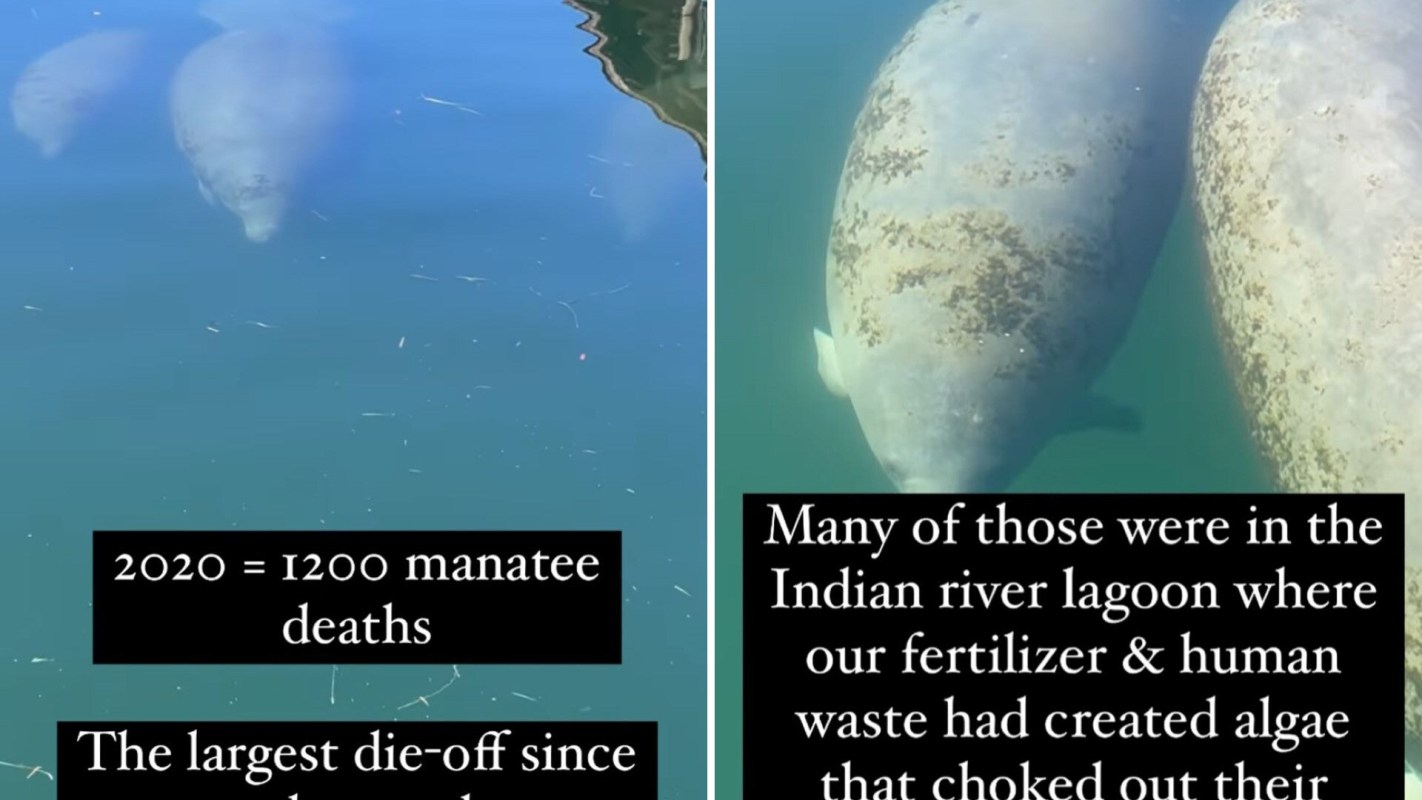Florida's manatees, often called "sea cows," have long been in danger of extinction. In 2022, The Guardian reported that they had been taken off the endangered species list in 2017 thanks to a revival in numbers. But in 2020, these "gentle giants" suffered a record die-off, reported Ginger Zee (@ginger_zee), chief meteorologist and managing editor for the climate unit at ABC News.
What happened?
Zee discussed the unhappy news in an April Instagram video. "2020 = 1200 manatee deaths," said the video's captioning, adding that it had been "the largest die-off since records were kept."
According to the video, the manatees died of starvation thanks to an algae bloom that killed off their food source, eelgrass. The algae, called Lyngbya, arrived in the Crystal River thanks to "the storm of the century" in 1993. Fertilizer and human waste flowing into the river created a plentiful food source for the algae, which grew so fast it killed off the eelgrass competing with it for sunlight.
"What you're seeing there is the Lyngbya," Zee says in her video, over a shot of slimy dark-green algae in the water. "That's the stuff that had taken over, that chokes out and blocks seagrass — or eelgrass here — from living. It's slimy and gross and the stuff that's not what you want to swim in."
She then shows an example of vibrant green eelgrass, a type of seagrass which an expert in the video calls "the champion of the story."
Why do manatees matter?
According to the National Oceanic and Atmospheric Administration, manatees and the seagrasses they feed on actually rely on each other to thrive. Manatees need this specific food source to live, but the grasses themselves are actually healthier when manatees keep them cropped short.
Seagrass, in turn, is a keystone of water quality in the area, according to aquatic restoration firm Sea & Shoreline (@seaandshoreline). In a recent Instagram video, a representative explains that "seagrass helps stabilize the sediment and prevent erosion and sedimentation, and just overall promotes better water quality as well." This is essential for both humans and wildlife who rely on these rivers for water and food.
"Seagrass also provides important habitat for juvenile fish, crustaceans, all kinds of invertebrates, and a source of food for critically important species," the Sea & Shoreline representative says.
What's being done to help?
In her video, Zee highlights Sea & Shoreline's efforts at restoration in the Crystal River.
"Sea & Shoreline has restored about 80 acres; their goal, 92," she says, and describes how the organization removes Lyngbya and dries it out for use as fertilizer.
Join our free newsletter for cool news and cool tips that make it easy to help yourself while helping the planet.









